Clipart tagged: ‘ksharks’
Dogfish
"Lateral view of dogfish (Scyllium catulus). Note ventral mouth with naso-buccal groove, heterocercal…
Smooth Hound
"Noted for the smoothness of its skin; sometimes called Ray-mouthed Dog; takes bait, but is…

Porbeagle
"Six feet long, and derriving its name from a resemblence of form to the porpoise. Common in European…
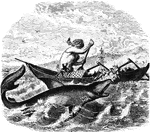
Shark
"Theses are at once distinguished by their elongated, spindle-shaped bodies, their branchial apertures…

Shark
An extensive genus of fishes of the ray family, found widely distributed in the ocean, but most abundantly…
!["Shark is an English popular name for any individual of the group Selachoidei. Sharks are scaleless, and the skin usually rough. They are numerous in tropical seas, becoming scarcer as they recede from the warmer regions, a few only reaching the Arctic circle. They are rapid swimmers, with great power of endurance; the larger sharks are exclusively carnivorous, and some of them extremely dangerous to man. They scent their food from a distance, and are readily attracted by the smell of blood or decomposing bodies. The flesh of sharks is coarse, but it is sometimes eaten. Their rough skin is employed by joiners to polish fine-grained wood, and by cutlers to cover the hilts of swords to make them firmer in the grasp. [Pictured] Egg of Scyllium Chilense"—(Charles Leonard-Stuart, 1911)](https://etc.usf.edu/clipart/16100/16199/sharkegg_16199_mth.gif)
Shark Egg
"Shark is an English popular name for any individual of the group Selachoidei. Sharks are scaleless,…
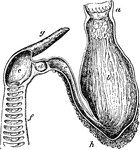
Shark Stomach
"Siphonal stomach and spiral valve of Basking-shark (Selache). a, esophagus; b, cardiac portion of stomach;…
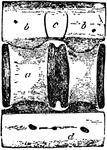
Shark Vertebra
"Lateral view of caudal vertebra of Basking Shark (Selache mazima). a, centrum; b, neurapophysis; c,…
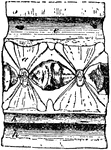
Shark Vertebra
"Longitudinal section of caudal vertebra of Basking Shark (Selache mazima). a, centrum; b, neurapophysis;…

Shark Vertebra
"Transverse section of caudal vertebra of Basking Shark (Selache mazima). a, centrum; b, neurapophysis;…

Hammerhead Shark
"Having a body like other sharks, but with a double snout like a double-headed hammer, and having an…
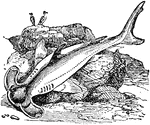
Hammerhead Shark
The eight species of hammerhead range from 2-6m long, and all species have projections on both sides…

Thresher Shark
"Is twelve to eighteen feet long, the tail nearly as long as the body; it uses this member for attacking…

White Shark
"Has the body elongated, swims with great ease, measures from fifteen to twenty feet, is extremely voracious,…

White Shark
An exceptionally big lamniform shark found in coastal surface waters in all major oceans.





